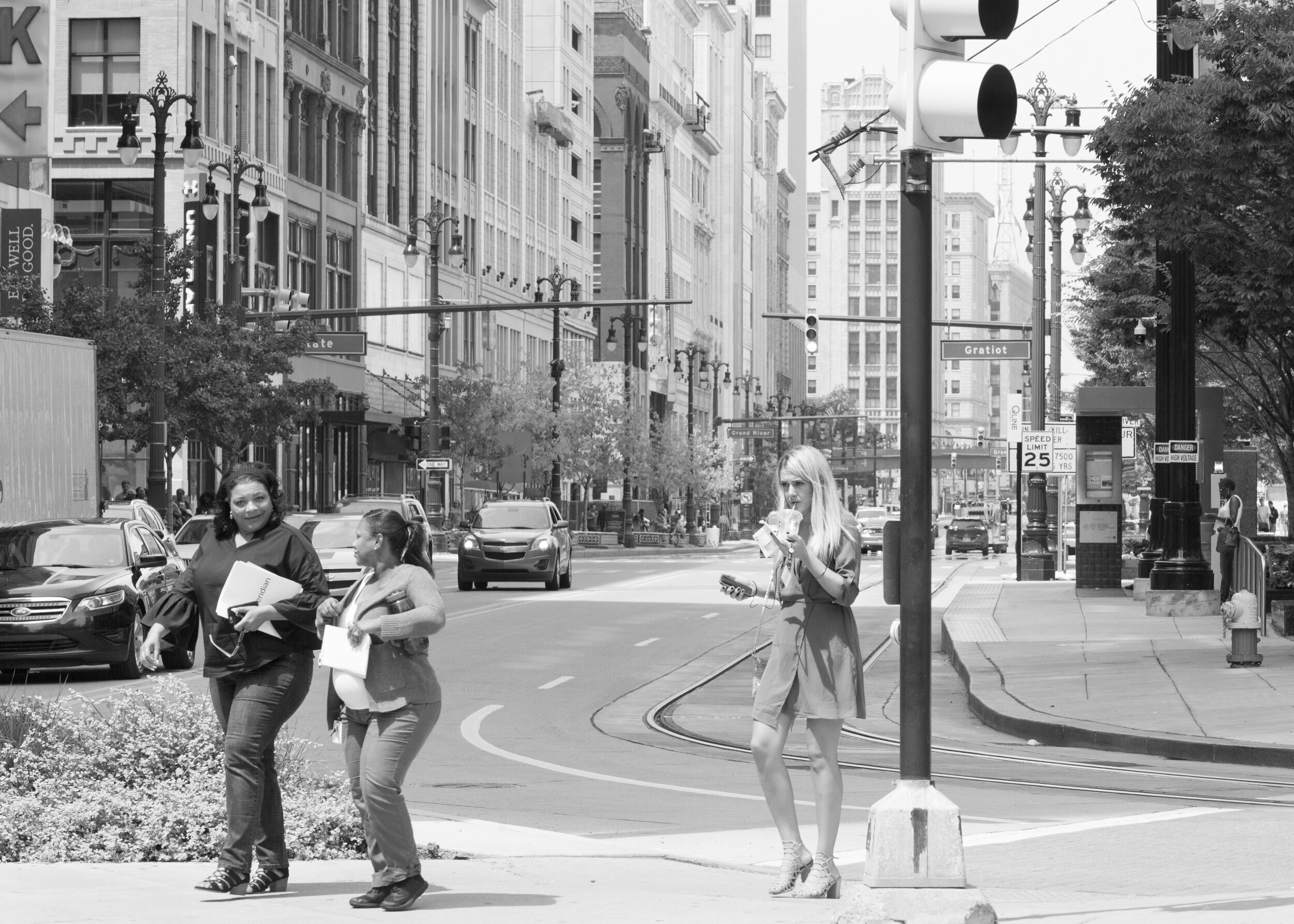Fifty years after Detroit's 1967 rebellion, large investments are revitalizing tiny sections of the city, like downtown and midtown. Previously empty streets are now bustling with activity. In a majority-black city with a history of racism and segregation, these areas of investment look predominantly young and white, leaving many residents in the city's 200 neighborhoods to ask, "what about us?" For Le Monde
Derrick Simmons views Faith Ringgold's painting "Flag for the Moon: Die N-word" at "Say it Loud: The Art of Rebellion" exhibition at The Charles H. Wright Museum of African American History in Detroit. The piece encodes the racist message "Die N-word" in the American flag's stripes with the expletive spelled out.
Construction of Little Caesars Arena nears completion north of downtown Detroit. The billionaire Ilitch family is building the sports venue where the Park Avenue hotel stood until its 2015 implosion. The adjacent building, the former Eddystone hotel, is being redeveloped as apartments and retail space.
The ? on the side of Honest John’s restaurant in Detroit’s Midtown seems to ask, “what is the future of this neighborhood?” Until recently, it was full of empty lots. Now, vacant storefronts are filling up. An upscale restaurant with a famous chef opened around the corner. Developers invest millions in remodeling apartments and condos for those who want to be where the action is.
A sign announcing a new education and cultural center sits at the corner of 12th St. and Clairmount (now Rosa Parks Blvd) across the street from the spot where the Detroit rebellion began July 23, 1967.
"A Riot is the Language of the Unheard". A video describing the 1967 Detroit civil unrest plays at the "Art of Rebellion: Black Art of the Civil Rights Movement" exhibition at Detroit Institute of Arts.





